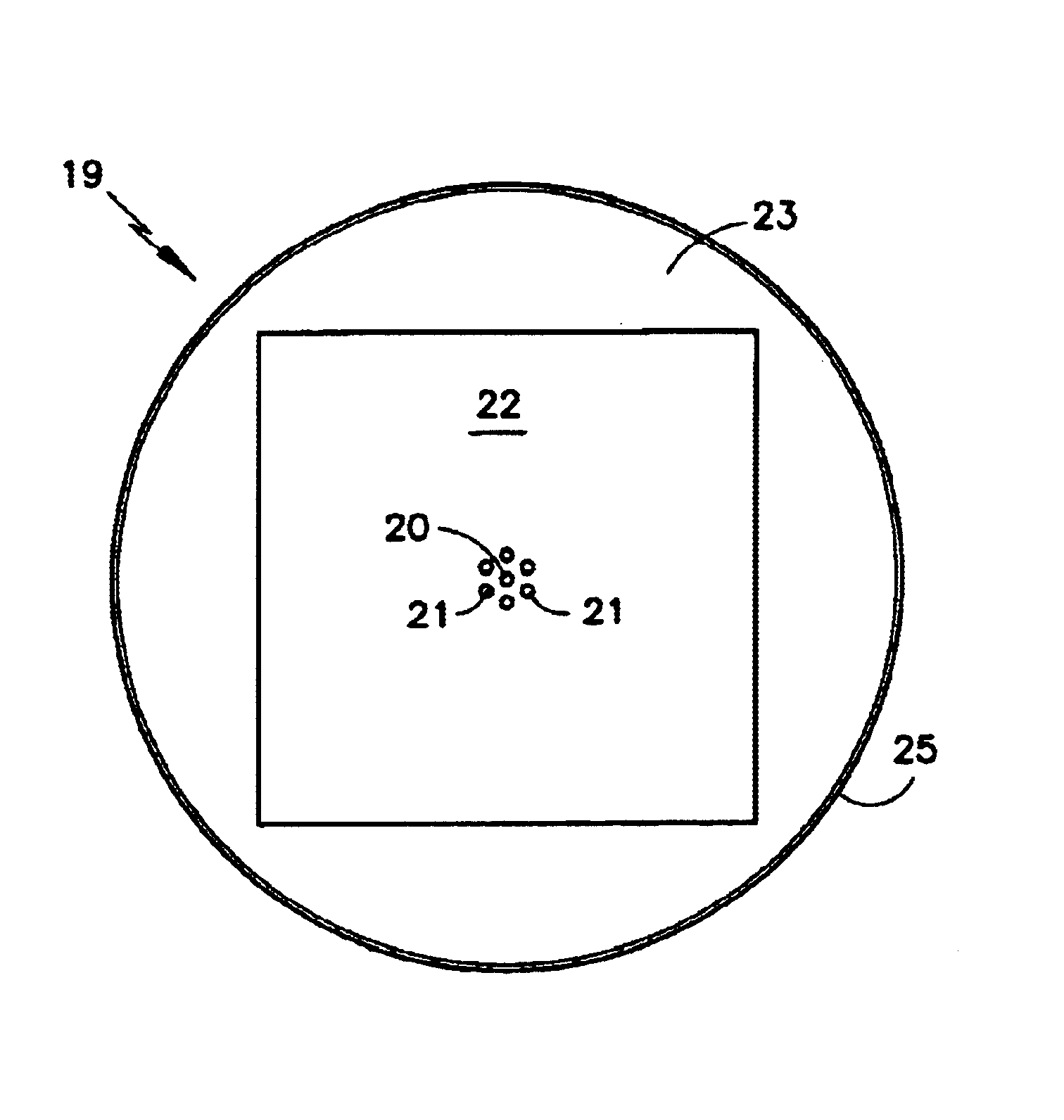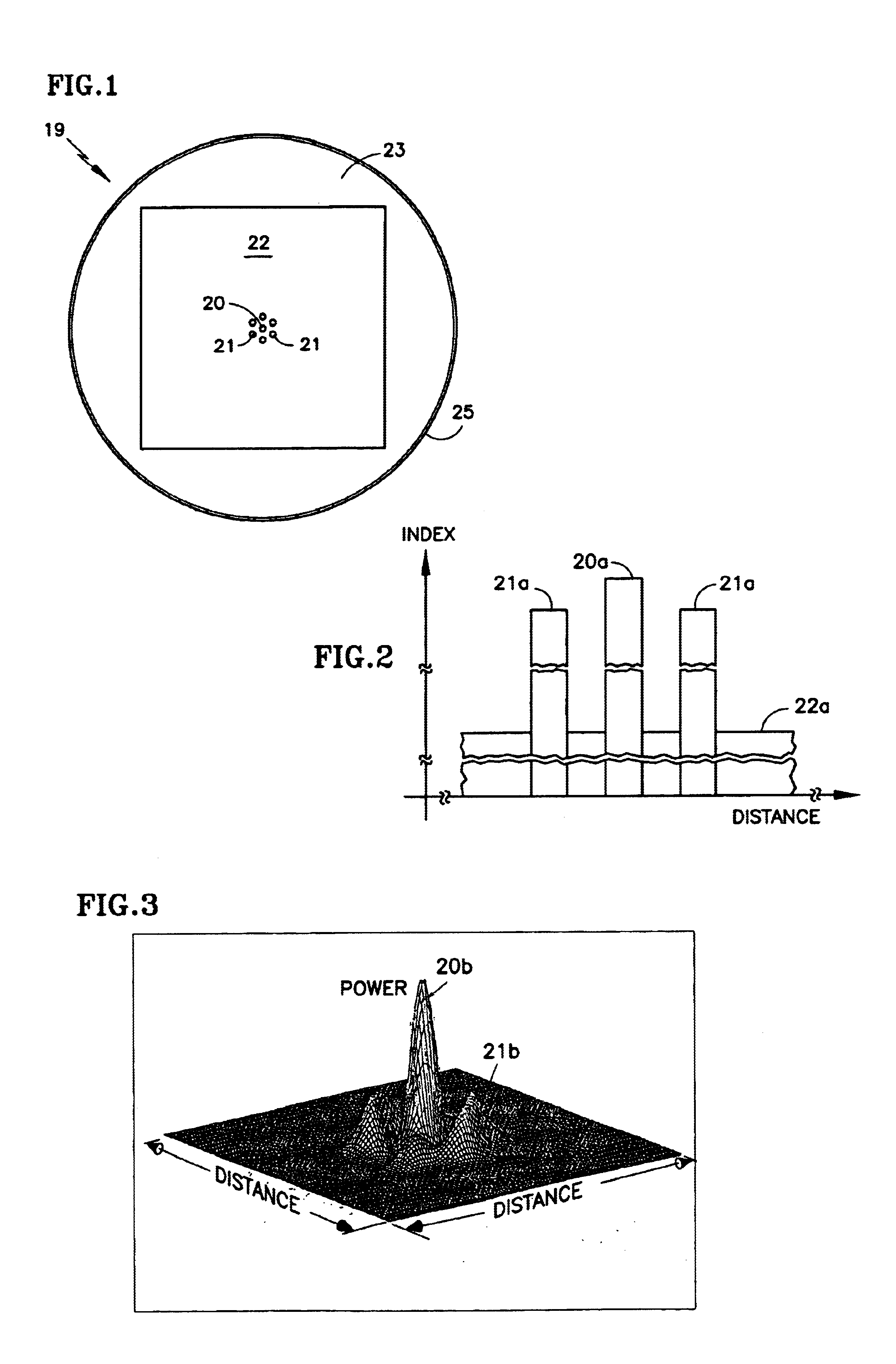Modal discriminating and linearly polarized fiber lasers
- Summary
- Abstract
- Description
- Claims
- Application Information
AI Technical Summary
Benefits of technology
Problems solved by technology
Method used
Image
Examples
Embodiment Construction
Referring to FIG. 1, a loser fiber 19 comprises a plurality of doped fiber cores, including a central core 20 and a ring of six cores 21 forming an isometric pattern. The cores 20, 21 are surrounded by an inner, pump cladding 22 which is within an outer cladding 23, all of which is surrounded by a protective coating 25. According to the invention, the cores 21 are provided with an index of refraction which is less than the index of refraction of the core 20, as illustrated by the bars 21a end 20a, respectively, in FIG. 2. For example, the ring of FIG. 1 may have a V-value of 1.6 whereas the central core 27 may have a V-value of 2.4. Naturally, the inner, pump cladding 22 has a much lower index of refraction as illustrated by the bar 22a. The difference in the index of refraction of the cores 21 from that of the core 20 need only be on the order of 1% in order to accomplish approximately a two-fold increase in the power (20b in FIG. 3) of the in-phase fundamental supermode, in contra...
PUM
 Login to View More
Login to View More Abstract
Description
Claims
Application Information
 Login to View More
Login to View More - R&D
- Intellectual Property
- Life Sciences
- Materials
- Tech Scout
- Unparalleled Data Quality
- Higher Quality Content
- 60% Fewer Hallucinations
Browse by: Latest US Patents, China's latest patents, Technical Efficacy Thesaurus, Application Domain, Technology Topic, Popular Technical Reports.
© 2025 PatSnap. All rights reserved.Legal|Privacy policy|Modern Slavery Act Transparency Statement|Sitemap|About US| Contact US: help@patsnap.com



